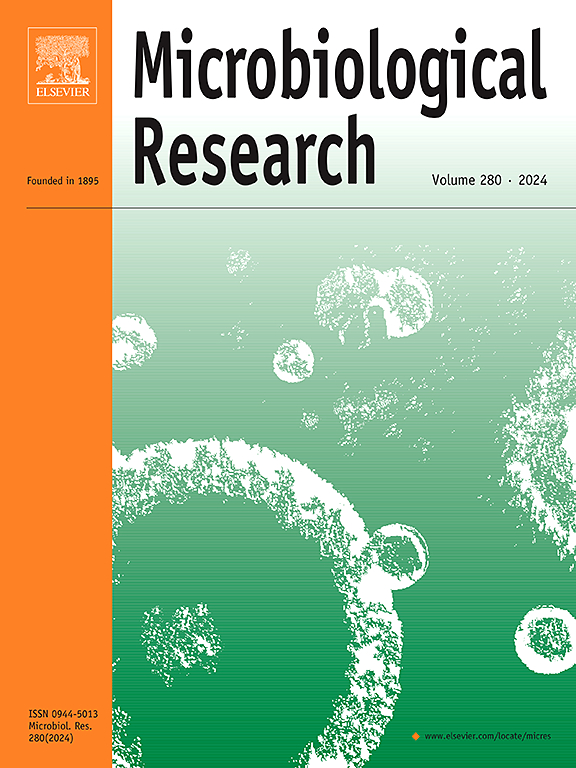Clca1 deficiency exacerbates colitis susceptibility via impairment of mucus barrier integrity and gut microbiota homeostasis
IF 6.1
1区 生物学
Q1 MICROBIOLOGY
引用次数: 0
Abstract
The intestinal mucus barrier has emerged as a promising therapeutic target for inflammatory bowel disease. Understanding its regulatory mechanisms is critical for elucidating ulcerative colitis (UC) pathogenesis, improving diagnostics, guiding treatments, and preventing relapse. Chloride Channel Accessory 1 (Clca1), a constituent of the mucus layer, remains understudied in colitis. Here, we investigated Clca1’s role in mucosal immunity and intestinal homeostasis using experimental colitis models. Clca1-deficient (Clca1−/−) mice displayed compromised mucus layer integrity, reduced neutrophil infiltration, and gut microbiota dysbiosis. Notably, Clca1−/− mice exhibited exacerbated colitis severity following dextran sulfate sodium (DSS) challenge, accompanied by a diminished goblet cell populations. Fecal microbiota transplantation (FMT) studies revealed that gut microbiota critically modulates divergent phenotypic outcomes between genotypes. Our findings establish Clca1 as a multifunctional regulator of mucus barrier integrity through mechanisms involving goblet cell maintenance, neutrophil-mediated immunity, and host-microbiota crosstalk. These results advance the understanding of UC pathogenesis and identify Clca1-associated pathways as potential targets for barrier restoration therapies.
Clca1缺乏通过损害粘液屏障完整性和肠道微生物群稳态而加剧结肠炎易感性
肠道粘液屏障已成为炎症性肠病的一个有希望的治疗靶点。了解其调控机制对于阐明溃疡性结肠炎(UC)发病机制、改进诊断、指导治疗和预防复发至关重要。氯化物通道附件1 (Clca1),黏液层的一个组成部分,在结肠炎中仍未得到充分研究。在这里,我们使用实验性结肠炎模型研究Clca1在粘膜免疫和肠道稳态中的作用。Clca1缺陷(Clca1−/−)小鼠表现出黏液层完整性受损、中性粒细胞浸润减少和肠道微生物群失调。值得注意的是,Clca1 - / -小鼠在葡聚糖硫酸钠(DSS)刺激后,结肠炎严重程度加重,并伴有杯状细胞群减少。粪便微生物群移植(FMT)研究表明,肠道微生物群对基因型之间不同的表型结果具有关键调节作用。我们的研究结果表明,Clca1是粘液屏障完整性的多功能调节剂,其机制涉及杯状细胞维持、中性粒细胞介导的免疫和宿主-微生物群串音。这些结果促进了对UC发病机制的理解,并确定了clca1相关通路作为屏障恢复治疗的潜在靶点。
本文章由计算机程序翻译,如有差异,请以英文原文为准。
求助全文
约1分钟内获得全文
求助全文
来源期刊

Microbiological research
生物-微生物学
CiteScore
10.90
自引率
6.00%
发文量
249
审稿时长
29 days
期刊介绍:
Microbiological Research is devoted to publishing reports on prokaryotic and eukaryotic microorganisms such as yeasts, fungi, bacteria, archaea, and protozoa. Research on interactions between pathogenic microorganisms and their environment or hosts are also covered.
 求助内容:
求助内容: 应助结果提醒方式:
应助结果提醒方式:


